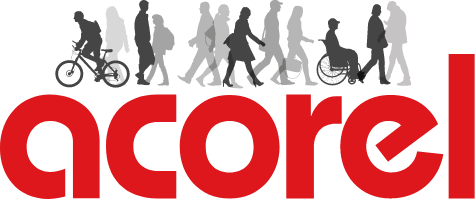Nowadays, effectively managing people flow in stations is essential to ensuring smooth and safe operations, as stations play a vital role in optimising people’s journeys.
People flow in stations
Analysing passenger habits and needs:
Understanding passengers’ habits and needs is the basis of effective station design. It is essential to carry out in-depth research and analysis into passenger behaviour, peak times and expected passenger volumes. This data can be used to identify bottlenecks, busy areas and those requiring special attention.
Layout and signage :
A well-designed station uses an intuitive layout that guides passengers naturally from one area to another. Clear, strategically placed signage helps passengers find their way around easily, reducing confusion and clutter.
Entries and exits :
Effective crowd management starts with entrances and exits. The number and location of entry and exit points must be carefully considered. Well-defined queues, automated ticketing systems and strategically placed staff can help streamline the flow and avoid traffic jams.
Separation of flows and zoning :
To manage large crowds effectively, it is essential to separate flows and establish zones within the station. Define zones for arrivals, departures, transfers and amenities. Clearly marked paths and physical barriers can guide people to their desired destinations, reducing conflicts and improving overall traffic flow.
Integrating technology :
The use of technology can significantly improve crowd management. The implementation of intelligent systems, such as people counting sensors and real-time data analysis, can provide valuable information to station operators. This information can be used to make proactive decisions, such as adjusting staff allocation, optimising resource allocation and identifying potential problems before they escalate.

Comfort for passengers:
Creating a comfortable environment in stations is essential to effectively managing the flow of people. Adequate seating, well-placed toilets and facilities such as water fountains or recharging stations reduce congestion caused by people waiting or looking for facilities. Comfortable waiting areas avoid bottlenecks and ensure a positive passenger experience.
Effective staff and training:
Well-trained staff play an essential role in effective crowd management. Equipping station staff with effective crowd management techniques, conflict resolution skills and clear communication protocols equips them to deal with difficult situations and ensure the smooth flow of people. It is essential that there are enough staff at peak times to guarantee rapid assistance and maintain order.

Counting is an essential tool for helping stations manage passenger flows effectively. By accurately tracking the number of people entering and exiting a station, transportation authorities can gather valuable data and make informed decisions regarding crowd control, resource allocation, and overall station management. Here’s a step-by-step guide on how counting can be implemented:
- Define counting zones: Identify specific areas within the station where counting will take place. This may include entry gates, platforms, ticketing areas, or specific sections prone to congestion. By dividing the station into zones, you can monitor passenger flows more accurately.
- Collect and analyze data: As passengers enter and exit the station, the counting system will generate data on the number of people passing through each counting zone. Collect this data and analyze it to identify peak hours, congestion points, and overall passenger flow patterns. This information can help stations optimize resources and develop strategies to manage crowds more effectively.
- Implement crowd control measures: Utilize the insights gained from the data analysis to implement crowd control measures. This may involve adjusting staffing levels, optimizing train schedules, or deploying additional resources during peak hours. By proactively managing passenger flows, stations can reduce congestion, enhance safety, and improve the overall passenger experience.
- Monitor and adjust: Continuously monitor the counting data and evaluate the effectiveness of implemented measures. Make necessary adjustments based on changing circumstances, seasonal variations, or special events that may impact passenger flows. Regularly review the data to identify long-term trends and patterns that can inform future planning and station management strategies
For more information click here
